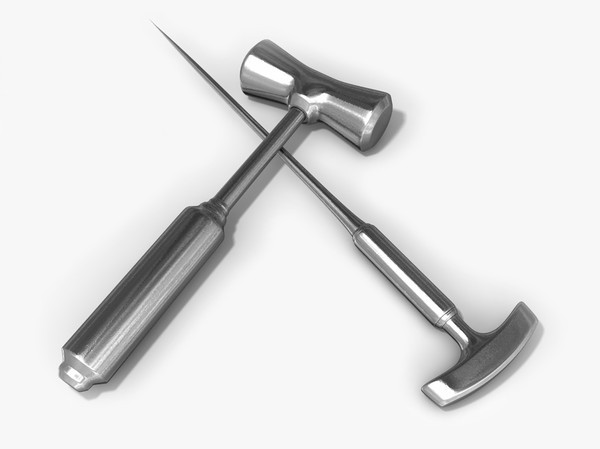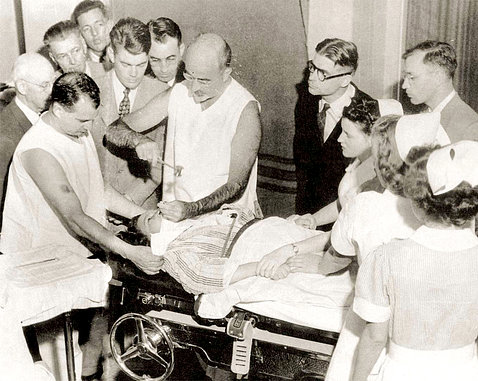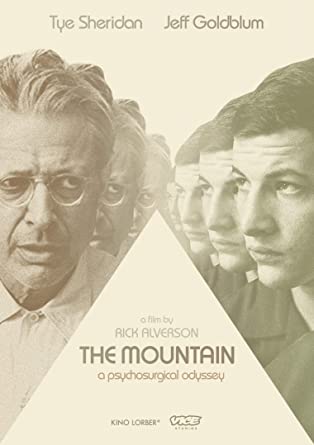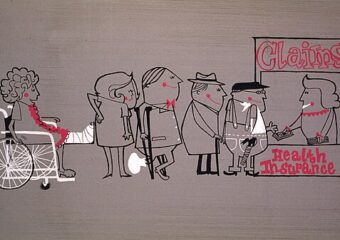Director – Rick Alverson
Writers – Rick Alverson, Dustin Guy Defa, Colm O’Leary
Vice Studios
Release date US – July 26, 2019
Run time – 106 minutes
Seen as screened on MUBI
According to the Art:
The movie tells the story of a psychiatrist traveling around to asylums in the US performing lobotomies during the mid-1950s when they were falling out of favor. While familiar horrors long associated with lobotomies and asylums are shown, their purpose in the movie is conveying the dangers of overconfidence and hubris existing in the US then and now.
Synopsis:
Andy is a twenty-something in rural America during the mid-1950s. He spends his days at an ice rink his father ostensibly owns and operates. Andy works the Zamboni, sharpens ice skate blades, and maintains the plant. In between, he plays cards with a couple of reprobates who work at the rink, and otherwise stares into space and keeps a morose countenance. As the movie opens, we hear him speaking to his mother.
Mom, Dad won’t let me visit, he says you don’t want to see me right now, I don’t believe him, I miss you.
Andy is not speaking to her directly; he does not know where she is, or why she is missing. He questions his father about her whereabouts never to any avail. But, the sudden death of his father opens an opportunity for Andy to learn his mother’s fate. While selling off the last of his parents’ estate in a garage sale, Dr. Wallace Fiennes, a psychiatrist, approaches him while looking over the goods. He introduces himself and tells Andy he knew his father and was one of his mother’s physicians. Andy asks Fiennes if he can make it possible for him to see his mother, but Fiennes tells him he “can’t do that…what I mean is, I don’t work there anymore…I can’t get you access to her…I’m sure she’s comfortable there.” Like Andy, viewers do not know where “there” is located.
Fiennes invites Andy to join him on his travels among different psychiatric institutions—asylums—to tote equipment and take photographs. Andy learns quickly what Fiennes does at the asylums while watching him explain “transorbital lobotomies” to institutional medical staff, and then while assisting him with individual patients. The two of them drive from asylum to asylum providing lobotomies for selected patients. Andy becomes acquainted with many of them as he interviews them for the records and takes their pictures before and after the procedure. Eventually, Andy asks Fiennes, “is that what you did to my mother?” Fiennes does not answer him. Nor does Fiennes answer him when he later asks, “Where do they go…after you change them?”
Andy realizes he is never going to find his mother by asking Fiennes or traveling with him. Based on his observations while on these trips, Andy thinks there’s way he could find his mother. He turns his attention to this mission and heads to The Mountain.
Analysis:
Andy’s quest reveals much about mental health in the mid-1950s, and in particular, the use of lobotomies, of which approximately 60,000 were performed between 1936 and 1956 in the US. The horrors shown are already well known from historical and cultural sources, many having contributed to the eventual closing of asylums. By placing the horrors associated with lobotomies into the story of one family and one psychiatrist, the movie isolates the impact of lobotomies at where mental health care of the mid-1950s meets its patients.
However, the writer and director, Rick Alverson, was not looking to tell this familiar dystopian tale. He was more interested in conveying the confidence and hubris of that time in America and as these societal characteristics manifested in science and medicine, and as science and medicine are representative of most other segments of the American society in this regard. All segments were seemingly unlimited in their capabilities and futures. As science and medicine could tame the beastly behaviors of some poor souls by taking out or mashing up parts of their frontal lobes, so could American ingenuity and brilliance tame all of society’s ills— QED.

Alverson builds the movie framework drawing from the professional life of Walter Freeman, the celebrated psychiatrist who performed the first prefrontal lobotomy in the US and subsequently developed the transorbital lobotomy (which became known as “ice pick lobotomy” based on the instruments used). He then, as does Dr. Fiennes in the movie, took the procedure on the road, instruments and cameras in hand.
With this framework, Alverson does indeed depict the horrors of ice pick lobotomies. But it also serves to highlight epistemological problems—what is actually known—inherent in the medical sciences and health care more broadly then and now. The framework further allows how innocent and vulnerable people are harmed when overconfidence and hubris dominate.
Chief among the problems the movie exposes is the overconfidence scientists and health care providers had in their knowledge and the resulting hubris they displayed. Evidence supporting lobotomies was never more than scant and anecdotal. The movie portrays the superficial evaluations qualifying patients for the procedure, and the thin justifications offered often had more to do with social objectives than medical indications—it was a perilous time for the quirky and even the most mildly offensive. For example, Fiennes tells Andy when he exhibits some doubts about the benefits of the procedure, “In some instances, the best that can be done for the family is to return the patient to them in an innocuous state.” In defending the procedure to a facility director who decided not to permit it any longer, especially with the growing adoption of a new medication, chlorpromazine (Thorazine), Fiennes appeals using the same rationale, “The approach that best benefits the hospitals, the institutions, the patients and patients’ families, that’s gonna stay with us.”
The movie takes place when lobotomies were losing their standing within the mainstream medical community, where it had been adopted by leading medical centers such as Johns Hopkins, Massachusetts General, and Mayo Clinic, and only a few years after winning the 1949 Nobel Prize for Physiology or Medicine for its originator, the Portuguese neurologist Egas Moniz. Hastening the rapid loss of interest in lobotomies were the “devastating postoperative complications, including intracranial hemorrhage, epilepsy, alterations in affect and personality, brain abscess, dementia, and death,” (Caruso) and the availability of the first antipsychotic medication.
And so we see how particular biomedical knowledge held as certain and important enough for broad adoption and to win a Nobel prize can quickly become discredited, disparaged, and denunciated. This Kuhnian “paradigm shift” in medicine—the sudden and shocking transition from a largely accepted scientific basis of medical practice standards among a sufficient group of adherents to new standards of practice based on scientific theories that had not long before been roundly dismissed as utter bunk, but increasingly favored by a growing group of adherents—would be seen many more times as the twentieth-century progressed and into the twenty-first. Indeed, in one such case, that of the shift from using solely antisecretory drugs for peptic ulcer disease to adoption of antibiotics, won the 2005 Nobel Prize in Physiology or Medicine for Barry Marshall and Robin Warren.
Alverson is not suggesting that only science and medicine exhibit this pattern, but rather it’s an archetype of many human endeavors. Unbridled human certainty and hubris, in its many forms and applications, will often run up against human fallibility and folly, and, alas, at a tragic human cost.

Also:
Sources used for facts and quotes:
-
Caruso JP, Sheehan JP. Psychosurgery, ethics, and media: a history of Walter Freeman and the lobotomy. Neurosurg Focus 43 (3):E6, 2017.
-
An interview with writer and director Rick Alverson, in which he describes what he had in mind with the movie is here.
-
The “Kuhnian paradigm shift” refers to Thomas Kuhn’s book, The Structure of Scientific Revolutions.
The movie was featured in an episode of the podcast, The Clinic & The Person.
For vivid details of Walter Freemans development and use of lobotomies, see the American Experience (PBS) documentary film, The Lobotomist.
Attribution for “ice pick lobotomy instruments: Alfabalık, CC BY-SA 4.0 via Wikimedia Commons
Role of Dr. Wallace Fiennes was played by Jeff Goldblum.



